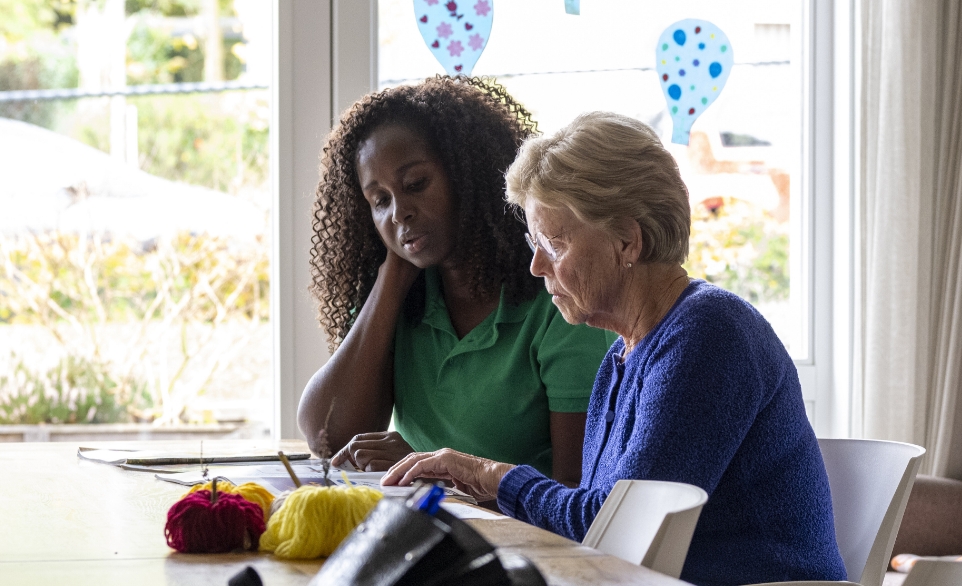
There’s a phrase that has echoed through time and cultures: “It takes a village.” In the world of care, it’s more than just a sentiment—it’s a strategy for survival, sustainability, and meaningful impact.
As care business owners, we’ve spent years navigating a system that often rewards isolation: competing for contracts, talent, and recognition. But the truth is, the care sector doesn’t thrive in competition—it flourishes in collaboration.
In this blog, we’ll explore why collaborative care is not just a trend but a necessity—and how embracing it can elevate your business, support your staff, and deliver better outcomes for those you serve. We’ll also point you toward our United in Care playlist on YouTube @bigsistercare, where you can hear real stories and insights from care leaders across the UK and USA.
The Problem with Going It Alone
Running a care business can be a lonely road. You wear every hat—from compliance lead to HR, from bid writer to emotional backbone of your team. But that level of isolation doesn’t serve anyone—least of all your clients.
Here’s the reality:
- Care companies lose time and money reinventing the wheel.
- Staff feel unsupported when their leaders are overwhelmed.
- Bids fall short because leaders don’t have insight into what “great” looks like.
- Clients receive fragmented care when providers don’t communicate.
Going it alone isn’t noble—it’s unsustainable.
The Case for Collaboration
At Big Sister, we’ve worked with over 500 healthcare businesses and supported more than £5 billion in government contracts. What we’ve seen time and time again is that the care companies who grow, retain staff, and win work are the ones who build community.
Here’s why collaboration works:
-
Shared Knowledge Accelerates Growth
One care company might be excellent at audits, another at marketing, another at CQC compliance. When we share insights, we all move faster. At Big Sister, we’ve created collaborative spaces—like the Founder’s Circle and United in Care—where that knowledge exchange happens daily.
-
Partnerships Open Doors
Forming local alliances with other providers, community groups, and even former competitors can help you:
- Win joint bids
- Fill service gaps
- Improve continuity of care
- Access funding through collaborative innovation grants
Evaluators love to see partnerships. They signal maturity, capacity, and community investment.
-
We Can’t Solve Complex Problems Alone
Social care is dealing with entrenched issues: workforce shortages, inequality, funding gaps, and rising demand. These problems are too big for one business to fix—but together, our voices carry. Through United in Care, we’re forming collective responses to policy changes, pushing for fairer terms, and shaping the future of commissioning.
What Collaboration Looks Like in Action
Wondering how to bring more collaboration into your business?
Here are practical ways to start:
Join a Care Leader Network
Participate in peer groups like Founder’s Circle or United in Care. You’ll get insight, encouragement, and real-time support from people who’ve been where you are.
Map Local Ecosystems
Make a list of every local charity, community group, and care provider near you. Look for ways to refer clients, co-host events, or deliver joint training.
Add Partners to Your Bid Strategy
When you respond to tenders, include local partners who fill your service gaps. Bidders with robust partnerships often score higher on social value and capability.
Build Internal Collaboration
It’s not just about external relationships. Encourage team-based thinking inside your company—care coordinators and carers working together to improve outcomes, management asking frontline staff for feedback.
The Big Sister Approach: United in Care
At Big Sister, collaboration is a core value.
We built United in Care to foster genuine relationships between care providers across the UK and US—offering:
- Monthly roundtables
- Peer interviews on our YouTube channel
- Joint learning events via Founder’s Circle
- Case study partnerships via The Daily Mile
- Group bid mentoring via Founder’s Circle
If you haven’t yet explored the United in Care YouTube Playlist, head over to @bigsistercare to watch episodes designed to help you build stronger, more resilient relationships in the care sector.
But What If I’ve Been Burned Before?
We hear this often: “I tried collaborating, but I got let down.”
That’s real—and it happens. But don’t let one bad experience make you close the door to what could transform your business.
Good collaboration starts with clear expectations, mutual respect, and aligned values. If you’re unsure, start small:
- Host a coffee catch-up with a nearby provider
- Collaborate on a community newsletter
- Share one resource or training opportunity
You don’t have to merge businesses or share trade secrets. Collaboration is a spectrum—and even small steps can create big change.
A Word from Jill, Founder of Big Sister
“I started Big Sister because I was tired of watching brilliant care founders burn out, give up, or go unnoticed. The more I worked with providers, the clearer it became: we are stronger together. If we unite, we can set new standards, secure bigger contracts, and change how social care works—not just for ourselves, but for every person we care for.”
— Jill Hudson
Final Thoughts: The Future Is Collective
In 2025 and beyond, the care sector will demand more from providers:
- Better evidence of community integration
- Stronger social value
- Resilience in the face of workforce shortages
You don’t have to carry all of this alone. The future of care is collaborative—and the village is already forming.
Next Steps:
- Watch the Playlist: United in Care on YouTube – @bigsistercare
- Follow us on Instagram: @bigsisterhomecare
- Join a Collaboration Roundtable: Email: hello@bigsistercare.com to get involved.
- Download our brochure, or book a call













